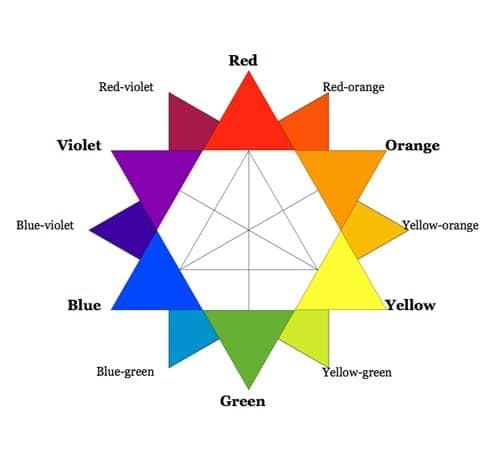Red velvet is a deep, rich shade of red that has long been associated with luxury, passion, and sensuality. Throughout history, art, and culture, the color red velvet has carried symbolic meaning and significance. Here is a look at some of the key things that the color red velvet can represent and symbolize.
Luxury and Opulence
One of the most common symbolic associations of red velvet is with luxury, opulence, and wealth. The deep, saturated shade of crimson evokes images of majesty and nobility. Red velvet conjures visions of throne rooms, palaces, aristocracy, fine fabrics like velvet and silk, and sumptuous furnishings.
In medieval Europe, red velvet was reserved for the robes of the most elite members of society. It was seen as the epitome of majestic colors, worn only by royalty, the wealthy, and high-ranking members of the church. The high cost and prestigious status of red velvet cemented its association with extravagance and decadence.
Later, in the Victorian era, red velvet retained its connotation of luxury. It was used for opulent women’s gowns, upholstery, and drapery. Dark crimson velveteen was also popular for men’s smoking jackets. The lush, full skirts and formal dresses made of fine red velvet represented the wealth and privilege of the wearer.
Today, red velvet still conveys lavishness. Red velvet cake is seen as the ultimate indulgence. From New York socialites to celebrities on the red carpet, red velvet gowns make a vibrant statement of affluence and status.
Romance and Sensuality
The rich, deep red hue also symbolizes romance, passion, and eroticism. Red is the color of love, the heart, and affection. Deeper shades of red, like red velvet, heighten these associations. Dark red roses represent passionate, sensual love rather than the purity of white roses.
In paintings, red velvet was often used in portraits to convey the sensuality and carnal essence of the subject. Drapes and bedspreads of red velvet evoked the chambers of a mistress or prostitute. Textures like velvet also have subtle erotic implications.
Red velvet conjures images of box seats at lavish old theaters, candle-lit restaurants, and plush lounges. It sets the mood for seduction, intimacy, and romance. Long associated with “affairs of the heart”, red velvet embodies attraction, desire, and sensuality.
Decadence and Indulgence
Building on its links to luxury and eros, red velvet also symbolizes decadence, extravagance, and indulgence. The implication is one of overindulgence, exceeding normal restraint and discipline. Red velvet gives a sense of abandoning inhibitions and guiltlessly enjoying sensual delights.
In Victorian times, associations of decadence and excess were linked to red velvet’s connotations of prostitution and eroticism. Today, indulgences like red velvet cake or red velvet cocktails evoke leisurely brunch outings or a night of dancing and revelry. Ordering red velvet items communicates a desire to luxuriate, indulge the senses, and celebrate lavishly.
Majesty and Power
The bold intensity of red velvet also makes it a symbol of majesty, prestige, and power. The most eminent and influential figures of history have long used red velvet as a visual representation of their status and authority. The rulers of ancient societies like Rome, Egypt, and China all wore red velvet robes and headwear.
Medieval popes and cardinals adopted the regal color, using red velvet on their vestments and throne chairs. The crimson shade became synonymous with the authority of the Catholic church. Later, red velvet ermine robes were worn by British kings and queens at their coronation ceremonies as a mark of their newfound sovereignty.
Today, red velvet is still used for official gowns, sashes, banners, and decor at high-level events, awards ceremonies, and government occasions. The bold, imperative shade commands respect and communicates the prominence and influence of the wearer. Few colors impart nobility and gravitas like red velvet.
Creativity and Unconventionality
While red velvet can represent tradition and opulence, its unique rich coloring also symbolizes creativity, originality, and unconventionality. Red velvet provides a welcome alternative to predictable colors like basic black and gives clothing, furniture, or interior design a quirky flair.
Red velvet cake was invented during the Second World War when bakers needed to substitute ingredients they could not find. The distinctive red hue came from adding beetroot or red food coloring to chocolate cake batter. The unusual look and flavor of red velvet heralded a break from tradition and inspired new whimsical baked goods and cocktails.
From David Lynch’s Red Room in Twin Peaks to U2’s Red Velvet Rope Tour, red velvet’s singular depth and vibrancy makes it a popular choice for works of art that push boundaries and challenge conventions. It adds atmosphere to avant-garde spaces, events, and productions. Red velvet represents innovation and imagination.
Femininity and Diva Glamour
Red velvet is also frequently associated with femininity, feminine allure, and diva glamour. The color evokes stereotypical “female” traits like passion, sensuality, beauty, and frivolity. It is seen as the embodiment of womanhood.
In the later part of the 20th century, red velvet became linked to divas and ambitious women who reveled in their sexuality and feminine wiles. Famous sirens like Marilyn Monroe, Jessica Rabbit, and Twin Peaks’ Audrey Horne, with their red lips, nails and clothing, cemented the stereotype of the red velvet diva.
Today, red velvet cupcakes, lips, and high heels represent ultra-femininity. Pop stars like Katy Perry, Ariana Grande, and Billie Eilish often wear different shades of red velvet onstage and in videos to project feminine confidence and glamour. The color remains strongly associated with female sensuality and charisma.
Conclusion
Red velvet is one shade that contains multitudes of symbolic meaning. Its association with royalty and privilege gives red velvet an aura of luxury, opulence, and majesty. The rich crimson shade also embodies romance, passion, indulgence, and sensuality. Red velvet represents feminine charm and unconventional creativity. The versatility of red velvet allows it to communicate sophistication, authority, playfulness, or seduction based on the context. This unique, eye-catching color will likely retain its symbolic potency and flair for centuries to come.


